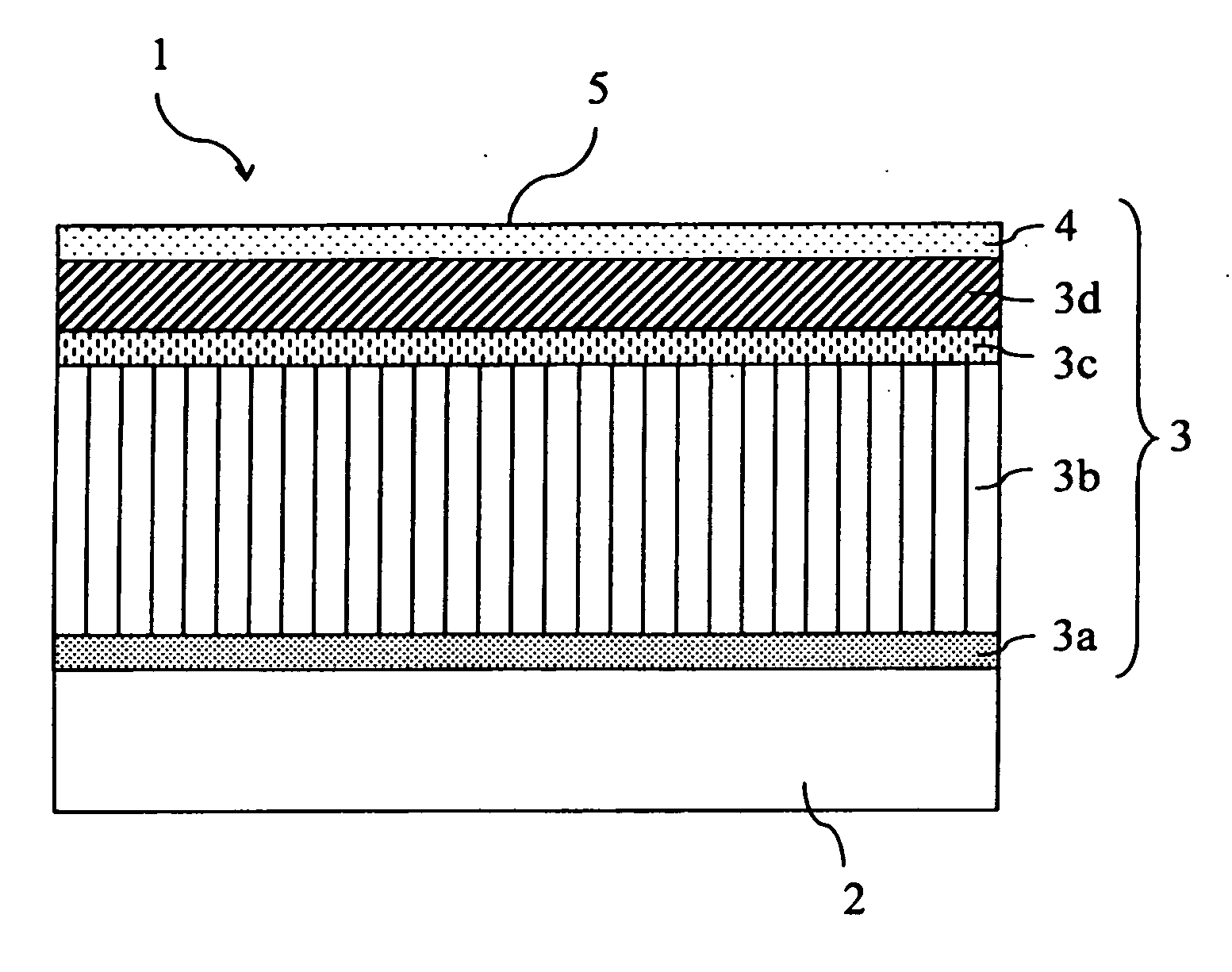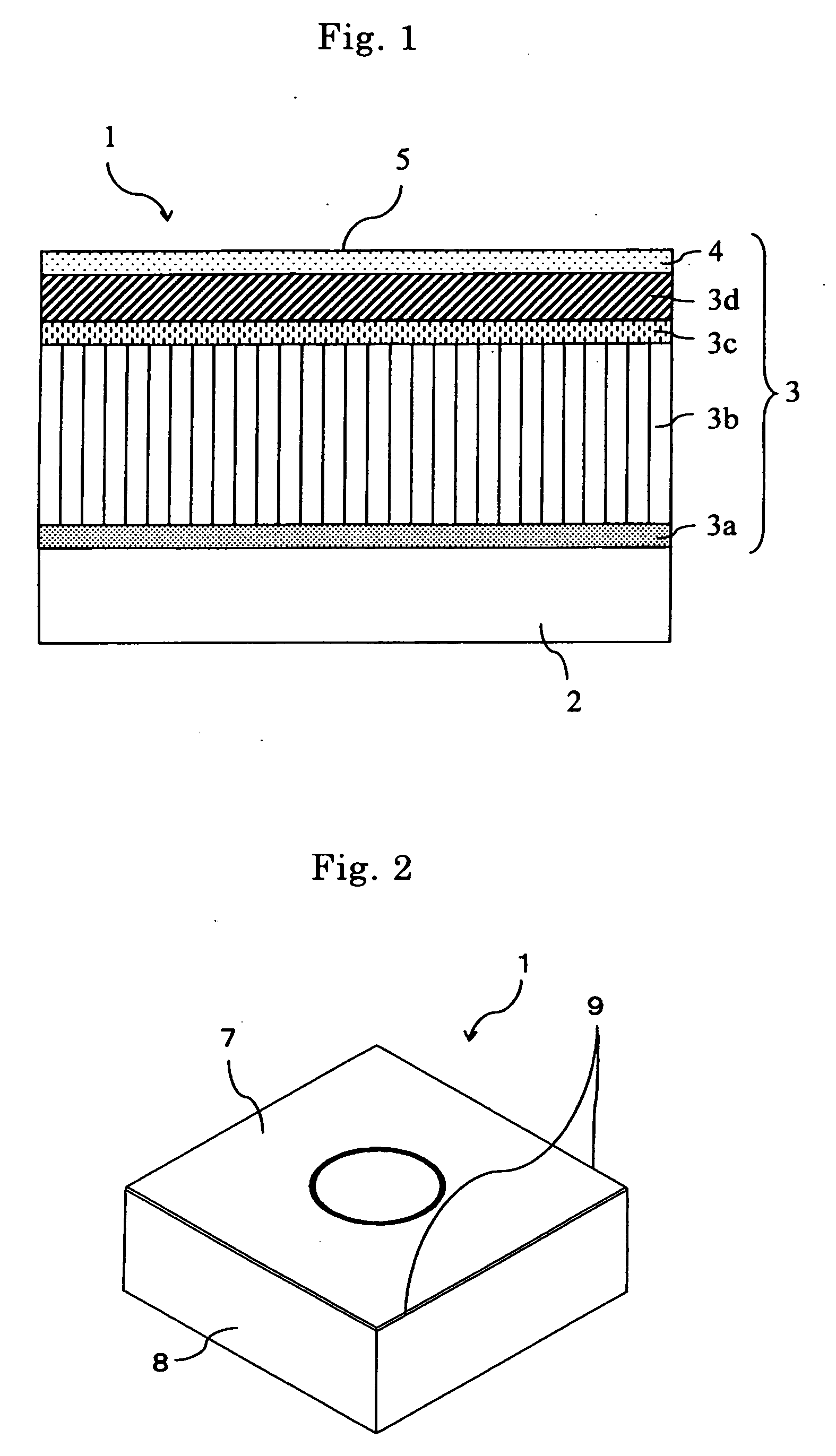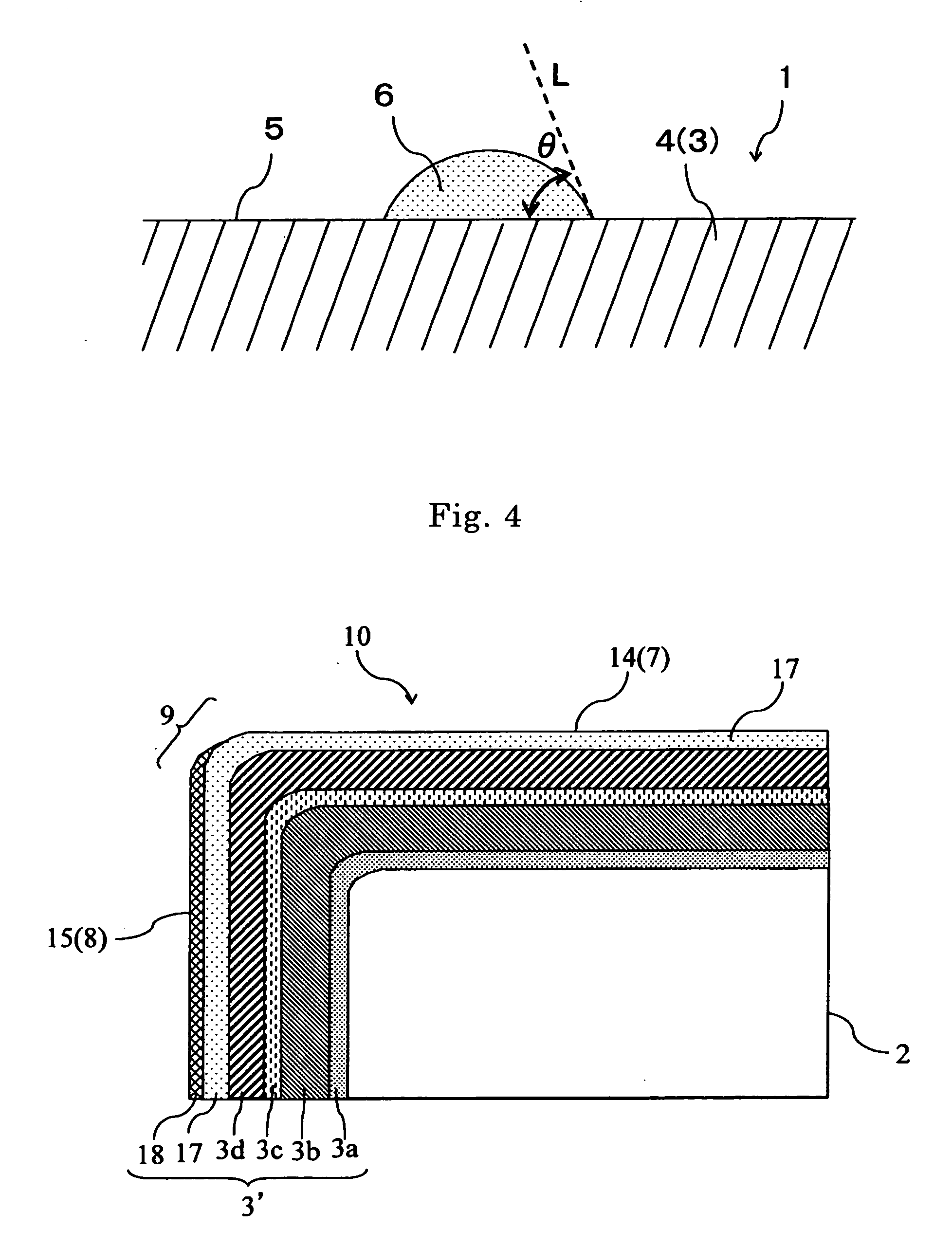Surface coated cutting tool
a cutting tool and surface coating technology, applied in the field of surface coating cutting tools, can solve the problems of film peeling, notch wear, lowering wear resistance, etc., and achieve the effect of stable and good finished surfaces
- Summary
- Abstract
- Description
- Claims
- Application Information
AI Technical Summary
Benefits of technology
Problems solved by technology
Method used
Image
Examples
first embodiment
[0032]FIG. 1 is a schematic cross-sectional view of enlarged main part, showing layer structure of a hard layer according to the first embodiment. FIG. 2 is a schematic perspective view showing a surface coated cutting tool according to this embodiment. FIG. 3 is a pattern diagram to describe a method of measuring a contact angle of water θ on the rake face.
[0033] The surface coated cutting tool of this embodiment is a throw-away tip type cutting tool (hereinafter, referred to simply as tool in some cases). As shown in FIGS. 1 and 2, a tool 1 comprises an approximately flat-plate-like substrate 2 and a hard layer 3 formed on the surface of the substrate 2. Furthermore, as shown in FIG. 2, the tool 1 has a structure where a rake face 7 is provided on the principal surface of the substrate 2, a flank face 8 is provided on the side surface and a cutting edge 9 is provided on the cross-ridge portion of the rake face 7 and the flank face 8.
[0034] As the substrate 2, for example, cement...
second embodiment
[0063]FIG. 4 is a schematic cross-sectional view of enlarged main part, showing layer structure of a hard coated layer according to the second embodiment. FIG. 5(a) is a pattern diagram to describe a method of measuring a contact angle of water θR on the rake face, and FIG. 5(b) is a pattern diagram to describe a method of measuring a contact angle of water oF on the flank face. FIG. 6 is a schematic cross-sectional view of enlarged main part, showing layer structure of another hard coated layer according to the second embodiment. In FIGS. 4 to 6, the same numerical references are given to the parts identical or equivalent to the above-mentioned structure of FIGS. 1 to 3 to omit description.
[0064] The cutting tool according to this embodiment is different from the above embodiment in that the contact angle of water of the hard coated layer has predetermined relationship on the rake face and the flank face. Specifically, as shown in FIG. 4, a hard coated layer 3′ of this embodiment ...
example i
[0112] First, to tungsten carbide (WC) powder having a mean particle size of 1.5 μm, 6% by weight of metallic cobalt (Co) powder having a mean particle size of 1.2 μm, 0.5% by weight of titanium carbide (TiC) powder having a mean particle size of 2.0 μm and 5% by weight of TaC powder having a mean particle size of 2.0 μm were added, mixed. Next, this mixture was molded into a cutting tool shape (CNMG120412) by press molding, followed by debinding process, and then sintered in a vacuum of 0.01 Pa at 1500° C. for one hour. Thereby, cemented carbide was prepared. In addition, through brushing, the cemented carbide so prepared underwent edge treatment (honing R) from the rake face.
[0113] Next, through chemical vapor deposition (CVD) method, various hard layers composed of a multilayer of layers having the composition shown in Table 2 were formed on the above cemented carbide. The deposition conditions of each layer in Table 2 were presented in Table 1. At this time, the reacting furnac...
PUM
| Property | Measurement | Unit |
|---|---|---|
| contact angle | aaaaa | aaaaa |
| mean particle size | aaaaa | aaaaa |
| surface roughness | aaaaa | aaaaa |
Abstract
Description
Claims
Application Information
 Login to View More
Login to View More - R&D
- Intellectual Property
- Life Sciences
- Materials
- Tech Scout
- Unparalleled Data Quality
- Higher Quality Content
- 60% Fewer Hallucinations
Browse by: Latest US Patents, China's latest patents, Technical Efficacy Thesaurus, Application Domain, Technology Topic, Popular Technical Reports.
© 2025 PatSnap. All rights reserved.Legal|Privacy policy|Modern Slavery Act Transparency Statement|Sitemap|About US| Contact US: help@patsnap.com



